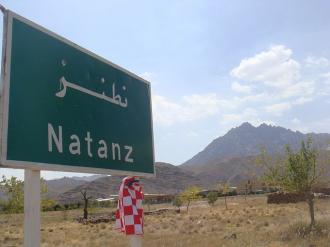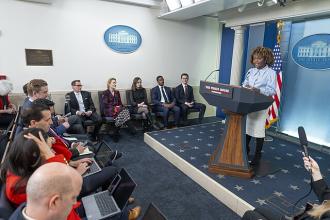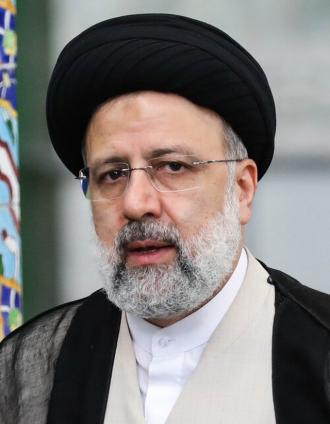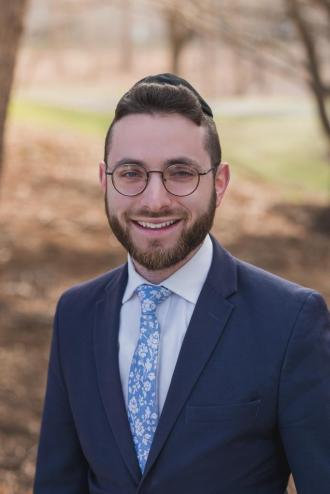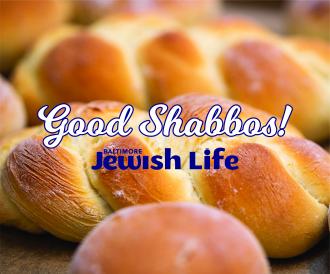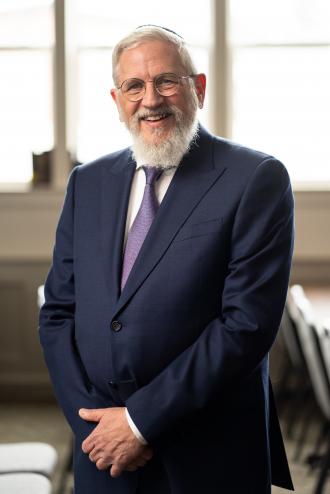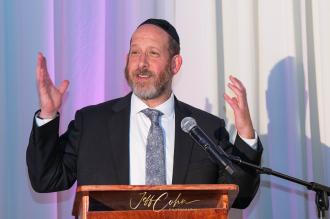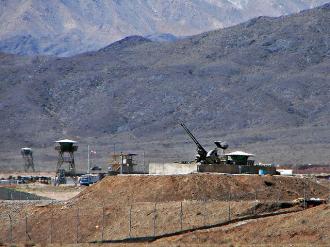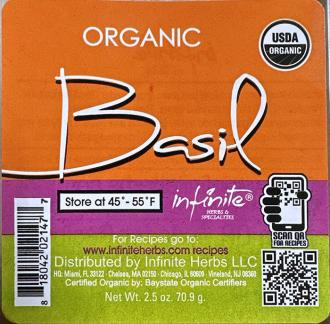We have a series of parshiyos describing the development of Klal Yisroel into a nation, and in many ways, Beshalach is the bridge-parsha between Yetzias Mitzrayim and Kabbolas HaTorah.
Let us go back to the beginning of Golus Mitzrayim. In Parshas Vayigash, Yaakov and Yosef lay out a plan to keep Klal Yisroel separate in Egypt. The goal is to avoid assimilation into Egyptian culture and their immoral way of life by having Jews live in a Jewish ghetto of Goshen. The Jews are coming from a corrupt but primitive culture of Canaan to a very advanced and sophisticated culture that was attractive. The posuk in Parshas Bolok says that the vision of Yaakov is that Klal Yisroel are safe and secure when they are separate. Yosef was well aware of the dangers of living in Egypt, so he decided to settle Klal Yisroel in Goshen right away. But the posuk says they were grabbed by it – they took to the land very strongly.
The first Rashi in Parshas Vayechi notes that it is a parsha stumoh. He explains that Yaakov wanted to reveal the future of Klal Yisroel till the Moshiach to his sons, but Hashem closed it to him. The Zohar gives a different take on this idea. Yaakov was able to reveal the end, but since the Jews started assimilating, they were no longer on the spiritual level to be able to understand what Yaakov was telling them.
Then we have Parshas Shemos where the entire generation who knew Yaakov Ovinu died. Klal Yisroel broke out of the ghetto of Goshen and started to integrate into the wider Egyptian culture. They stopped bris miloh which is supposed to be a barrier to assimilation. The Jews want to be good citizens and were willing to do everything necessary to be accepted. So much so that Pharaoh took advantage of this Jewish mania of being accepted by the non-Jews and enslaved them through a national service campaign.
Klal Yisroel were divided into three groups. Shevet Levi never thought about integrating into Egyptian culture. Strangely enough, Pharaoh kept his promise to support the Jews in Goshen, and Shevet Levi who never left Goshen, didn’t have to work.
Among the rest of Klal Yisroel who integrated, there were two groups. One became fully assimilated and lost their Jewish identity completely. The other group was struggling with the pull of assimilation but maintained their basic Jewish identity. There is an incredible midrash which says the Jews worked as slaves during the week but on Shabbos they studied the megillos that were handed down to them from the Ovos. At the end of the shibbud before the makkos began, Moshe appeared before Pharaoh and threatened to take Klal Yisroel away from Pharaoh’s control. Pharaoh decides he needs to double their workload. Why? They need to be fully occupied so they won’t have time to connect to their mesorah from the Ovos through studying these megillos. Pharaoh realized that as long as his Jewish slaves stayed connected to their Jewish identity through limud Torah, he won’t be able to fully control them.
So these Jews lived double-lives. On the one hand they left the ghetto of Goshen and tried to integrate into Egyptian society. But on the other hand, they still kept their connection to the Ovos and retained their identity as Jews. They knew that Yosef HaTzaddik, before he died, had predicted a future time when they would eventually be able to leave.
So there was one group that was so assimilated that they lost their basic connection to the Ovos. And the other group was struggling with their identity. Who were they? Jews or Egyptians? Then we come to the year of the makkos. The Jews don’t have to keep working as slaves anymore. Hashem is sending message after message that He is in charge of all natural forces. One group is happy to stay under their Egyptian masters in both good times and bad times. Now times are good, so they are happy to stay in Egypt. They see seven makkos and were not budged – not affected at all. So they have to die in Egypt. The other group see the makkos and take the lessons and want to leave. Those are the only two options – leave or die. Hashem decided there will not be a single Jew left in Egypt.
Then, after makkas choshech where most of the Jews died, there is one final nisayon for the Jews who want to leave. It is easier to take the Jew out of Egypt than to take Egypt out of the Jew. With makkas bechoros, they are being tested to see if they have actually succeeded in separating themselves from Egyptian society. Makkas bechoros was a kind of decree where the middas hadin was unleashed on the general Egyptian population – a specific tzibbur. If you belong to that tzibbur, you will suffer the fate of that tzibbur. There won’t be distinctions between the tzaddikim and reshoim. If you identify with another tzibbur then you can escape the din.
Bringing the korban Pesach was the way a Jew in Egypt could prove which tzibbur he belonged to. If he can take the avodo zoro of his masters and slaughter it and put its blood on his doorposts for all to see, he is showing that he is renouncing his connection to his Egyptian masters. He is not part of their tzibbur anymore and he will be saved from the decree that was put on them.
Hashem gave a similar decree on S’dom. Whoever was connected to the society of S’dom would be destroyed. The malochim warned Lot and his family not to look back at S’dom while they were fleeing. Why? You need to disconnect completely from your former life in S’dom. Because if you look back, you demonstrate that you are still connected emotionally to what you left behind. Lot’s wife looked back and she shared their fate. This was the nisayon on Seder night in Egypt as well. Klal Yisroel had to demonstrate that they are no longer connected to Egyptian society because otherwise they would be included in the decree. Those who felt they still belonged in Egypt died in Egypt.
On the night of Pesach there is a gilui Shechinoh and a total destruction of all the avodo zoros. Pharaoh and the entire Egyptian nation are begging them to leave in the middle of the night. Hashem says no – they will leave when I say it’s time and not a moment earlier. In the morning, Hashem says they all have to leave – immediately! No time for preparations – not for food, not for water – just grab what you can and leave. This was the next nisayon – they had to trust that Hashem will take care of them as they leave into a barren desert with no real provisions – for over three million people. They had bitachon.
They come up to the Yam Suf with Pharaoh chasing after them. Klal Yisroel are trapped with nowhere to go. Hashem says go straight into the water – till it reaches up to your nose! Again a test of bitachon.
At Kriyas Yam Suf, Klal Yisroel were raised to the level of nevi’im – they perceived the Merkava like Yechezkel Hanovi who was one of the greatest of nevi’im. They went through an incredible cleansing process and now they can see things very clearly.
The midrash tells how the geography was the background for the miracle of kriyas Yam Suf. They travelled from Succos which is at the extreme eastern end of the Nile delta. They travel due south to the coast of Suez. Hashem says go back up and come to Pi Hachiros. This is the border which separates Egypt from the south. Why is this place significant? Yosef amassed an enormous amount of gold and silver for Pharaoh during the years of famine. Pharaoh didn’t want to store this treasure near the population centers, so he made a special military camp at the border – next to Ba’al Tzefon, the god of money – to guard this wealth. Of all the avodo zoros that were destroyed, Hashem kept this god of Ba’al Tzefon intact. The god of money is always the last god people hold on to. So when Klal Yisroel turned around and headed south, Pharaoh assumed they were going for his treasure kept at Pi Hachiros! He couldn’t tolerate this! So he chased after them. The army in Egypt joined Pharaoh plus the military camp at Migdol. They all charged into the dry sea bed after Klal Yisroel and then they all drowned.
The midrash says Klal Yisroel didn’t cross Yam Suf to the other side of the sea. They moved in a semi-circle coming out further up on the same side of the coast. So when they emerged, they were still next to the treasure houses of Yosef – with no-one left to guard them! This was the bizas hayam and this is why the bizas hayam was greater than bizas Mitzrayim – it was this massive treasure that was stored at Migdol that Klal Yisroel took after kriyas Yam Suf. Hashem fulfilled his promise to Avrohom that Klal Yisroel would leave the Golus Mitzrayim with great wealth.
Klal Yisroel is traveling in the desert and Hashem is providing them with food and mon. They are living on a supernatural level of existence and they are reaching greater and greater levels of nevuoh. After they get the mon, Moshe takes a container to preserve a portion of the mon for future generations. It is to remind Klal Yisroel that Hashem can provide for us in all different ways in all times of history – just like He did in the desert.
Hashem has exposed Klal Yisroel to unbelievable levels of gilui Shechinoh and insight into the reality of Hashem. He is building them up step-by-step to have an absolute clarity in everything about how the world runs. They are going to Har Sinai to get the Torah.
The Mechiltoh at the beginning of Beshalach asks: Why did Klal Yisroel need to stay in the desert for forty years and not go straight into Eretz Yisroel? This is a strange question because we know from the Chumash that Klal Yisroel sinned by believing the meraglim. Hashem had to wait for this generation to die out and bring in the next generation – and this took another 38 years. But the Mechiltoh gives a different answer. If Klal Yisroel would go straight to Eretz Yisroel after they were artificially lifted up to the madreigoh of absolute clarity, then they would have fallen from their high madreigoh very rapidly. They would have started to live ordinary lives pursuing their parnossoh, and the Torah they just learned would have been neglected. So Hashem saw to it that Klal Yisroel had plenty of time in the desert – living miraculously with all their needs provided – so that they could integrate the Torah into their being. They would spend forty years waking up, hearing Moshe Rabbeinu’s shiur, then hearing it reviewed by Aharon and his sons, etc., all day every day, year after year, until the Torah was absorbed into their bones. How do you get Egypt out of the Jew? It can’t be done quickly. It is a slow, gradual process of constant limud Torah.
Here is a story of a people who see the truth revealed to them, but it is after being in Egypt and wanting to be like the Egyptians for so long. There is only one way to transform them – limud Torah day and night. Torah has the capacity to change the human being. But it doesn’t happen overnight. Even with the most phenomenal rebbe – you need to work at it constantly.
The Rambam in the end of Hilchos Mikva’os paraphrases the gemara in Brochos that says Torah is like a mikvah. There is tumoh of the body which is removed by a physical mikvah, and there is tumoh of the nefesh – wrong attitudes, wrong ideas, wrong middos – which can be removed by learning Torah. But you need one condition – you need the intention to allow Torah to change you.
You can go into Eretz Yisroel only when you are ready – when you get Egypt out of you. And this applies to us today as well. We grew up in an environment that isn’t a pure Torah environment – with all kinds of non-Jewish influences. How do you become pure Torah? It is a process. It doesn’t happen just by dipping in a mikvah. It doesn’t happen by physically being in a yeshiva building and learning 8 hours a day while paying attention to all the nonsense that is going on outside. It needs a total immersion in the realm of Torah thoughts and ideas and attitudes.
We live in a complicated world which is spinning out of control. What was inconceivable and totally abnormal ten years ago is totally normal today. What is totally inconceivable and abnormal today will be totally normal ten years from now, if Moshiach doesn’t come. We live in this world and are affected by this culture. The only way to cleanse yourself from it is through immersion in Torah and making Torah a deep part of your being. This is how those who left took Egypt out of themselves. We aren’t as assimilated today as we were in Egypt, but we still absorb the ideas and attitudes that are out there.
Klal Yisroel are given every lesson and complete clarity, but it isn’t going to last. Forty days after Matan Torah they get disoriented and make a golden calf. They still haven’t gotten all Egyptian culture out of their system, and it will take the time to deeply absorb all the lessons they got during this accelerated process of development.
Parshas Beshalach is a transition parsha. They left Egypt. Hashem brought them out with open miracles and defeated Pharoah and his military at kriyas Yam Suf. He gave them water and mon miraculously. With the mon, Hashem says keep it with you for all time to remember how you get parnossoh. There is a fundamental idea being taught with the mon. Parnossoh always comes from Hashem – sometimes by miracle and sometimes through nature.
Then comes Ma’amad Har Sinai – total clarity and total awareness of the truth. But they can’t go straight into Eretz Yisroel afterwards. They need to go through a slow, gradual process. The first step in this process is Parshas Beshalach – to get Klal Yisroel out of Egypt and into a desert – where there are no non-Torah influences to dilute the lessons they will be learning. Give them a Torah – give them a Moshe Rabbeinu – until little by little they will absorb all the lessons. Then, after 40 years, their fundamental being will be a being of Torah and there is no danger of going into Eretz Yisroel and pursuing a parnossoh. They won’t forget the Torah no matter what they do.
The lessons for us are obvious. We have grown up in an environment that has all kinds of crazy ideas and influences. To some degree it became a part of us. We have to use Torah to cleanse ourselves. A ben Torah is someone whose very existence is Torah. You become a ben Torah only after you spend time integrating Torah consistently for a long time. Rashi after Rashi, Tosfos after Tosfos, Ketzos, Nesivos, Rabbi Akiva Eiger – until Torah becomes a part of your being and you will never leave it – no matter what you do later in life.

